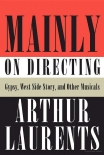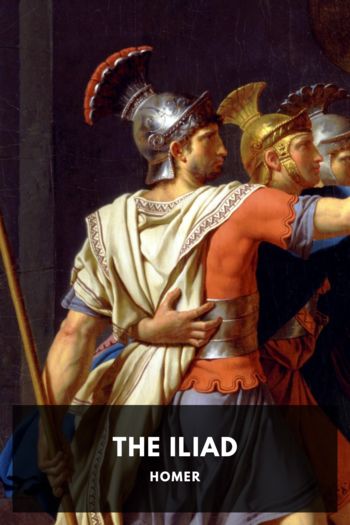Mainly on Directing, Arthur Laurents [best books for students to read TXT] 📗

- Author: Arthur Laurents
Book online «Mainly on Directing, Arthur Laurents [best books for students to read TXT] 📗». Author Arthur Laurents
When you attempt something new or different or merely ambitious, don't trust in luck. There is no good luck in theatre—unless a critic's unexpected, unfathomable (even to you) rave is considered luck. Polish every detail; it's all in the details, in the individual moments. Halfway measures avail you nothing: going all out is the only chance. We were home, but we didn't let go, we locked in the details—with more smoke and mirrors: one more invention, one more surprise. The Cagelles paraded like the most elegant models, but when they were ready to remove their gilded coats, they didn't merely drop them in the wings. They moved gracefully into a row of arches that had come down, struck what seemed to be a narcissistic pose, and when the arches flew back up, the coats flew out with them and the creatures were now in Riviera beach pajamas, which allowed them to dance—they were all marvelous dancers. A trick, but tricks like that aren't as easy as they seem. They demand painstaking care and endless rehearsal. To work, they have to flow smoothly; when they do, the audience capitulates like children at the circus—or adults at the Cirque de Soleil. More smoke and mirrors ensured enslavement: another magical costume switch allowed highly skilled tap dancing. Then one last use, the most effective of all because it led back to character and story—always, always the goal. It's so difficult to find and get right, but without that, smoke and mirrors are just smoke and mirrors, theatrical devices to blind the audience to the emptiness on stage, the holes in the story, the lack of dimension in the characters. When used for something more than diversion and entertainment, they can make musical theatre memorable—like their last use in the opening number of Cage.
In the France of La Cage aux Folles, the law made drag performers remove their wigs at the end of their act to prove there was no attempt to deceive the audience, and so the Cagelles ended the opening number by removing their wigs with a very theatrical flourish. Nonetheless, they didn't necessarily reveal their true gender: the longest, loveliest hair that tumbled down when the wigs were removed didn't belong to a woman but to a startlingly beautiful young man. This confused everyone, but by then, that was just what they wanted. What could be happier than an audience at a musical that gets what it wants? So happy, they didn't suspect the climax of the second act was being set up: Albin, in Chanel-like drag, pretends to be the boy's mother. From habit, he removes his wig at the end of a song sung to the boy, his fiancée, and her homophobic father. Mother Albin is exposed as a man; mass hysteria—and the play was positioned to make its point. All the parts rarely fall into place with just one stroke as they did at that moment. Joy for everyone—the creators, the executants, and, above all, the customers.
That theatrical sorcery continued throughout the evening. The lovely young girl hired as the love interest wasn't much of an actress and less of a singer. The choreographer had to be allowed to win one battle: the girl was a lovely dancer. Unfortunately, as it turned out, her dance was radically shortened—as it often turns out, because musical theatre has severely diminished the audience's interest in Pierrot and Pierrette. She had her dancer moments nevertheless: at every entrance, she came in turning like a top, ending in a swoon into some male's arms. Why? Because on the page, her character was the ingénue, Pierrette, barely two-dimensional. The turning entrance gave her a quirky touch, and the swooning added humor and sex (the only sex in the play).
If a style is established, a character can enter walking on her hands and the audience will buy it. The style of Cage was established in the first scene by the slightly off-the-wall but oddly real behavior of the two major characters and their houseboy, Jacob— a tricky character because he's black and gay and unbridled: a combination that can be lethal if the wrong line is crossed. Succumb to the temptation of unchecked screeching, as the tasteless revival did, and Evangelicals will rejoice. The key, as always, is emotional reality. The right emotional center and the character can safely do anything. A rejected and depressed Albin walks along the Croisette in a white suit with a white Panama hat and black sunglasses, dabbing away with a large white handkerchief edged in black. (I stole the handkerchief from John Gielgud in The Importance of Being Earnest.) Jacob, in a white Greek toga bordered with a black frieze, holds a large black-edged white umbrella over his adored “mistress” as they move in rhythmic grief to a classical dirge. The audience found it very funny. Smoke and mirrors.
The reaction to the show continually astonished us. Previews began in Boston in a torrid July. (West Side Story had begun previews in Washington in a steaming August. Does that advise opening in a heat wave? I think not.) The first preview had the audience on its feet, even in the upper balcony. The next morning, the line at the box office was so long, the producers threw caution and money to the





Comments (0)